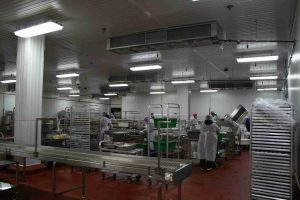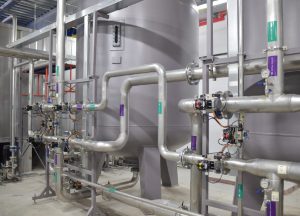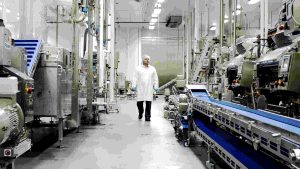Italian food processing plants are critical to the country’s culinary legacy, changing agricultural produce into various tasty dishes. These facilities are situated in the countryside to keep up with the respectability of every fixing safeguarding its flavor and healthy benefit.
They utilize state-of-the-art advancements and economical practices to improve proficiency and decrease natural effect. They likewise support neighborhood networks by giving business opportunities obtaining fixings from adjacent homesteads and taking part in local area occasions.
These facilities represent the country’s culinary legacy, mixing custom and advancement, flavor and development. As they adjust to worldwide market requests, they keep on conveying remarkable items.
Italian food handling plants regardless of their standing for greatness are not invulnerable to challenges. From administrative obstacles to strategic intricacies these facilities explore a scene loaded with challenges as they attempt to keep up with elevated requirements of value and productivity.

One of the essential difficulties faced by Italian food handling plants is exploring the complicated trick of administrative prerequisites. From food handling guidelines to natural guidelines, consistency is non-debatable. Meeting these severe prerequisites frequently involves critical interest in foundation, preparation and documentation to guarantee conformity to lawful systems at both public and global levels.
Keeping up with predictable quality across batches is essential for maintaining the standing of Italian food handling plants. In any case, accomplishing this consistency presents difficulties, especially while managing normal fixings that are dependent upon varieties in flavor, surface and healthful substance. Powerful quality control measures including ordinary testing and observing are fundamental to distinguish and address deviations from wanted guidelines.
Powerful Supply Chain Management is basic for the smooth activity of food handling plants. Notwithstanding, obtaining top notch fixings in adequate amounts can be a test, particularly for occasional or specialty items. Moreover, guaranteeing opportune distribution of unrefined components and overseeing stock levels to stay away from stock outs or wastage requires cautious preparation and coordination with providers and merchants.
Upgrading functional effectiveness is a consistent pursuit for Italian food handling plants trying to limit costs and boost efficiency. Factors like gear personal time, energy utilization and work the board can affect generally proficiency. Executing trend setting innovations, smoothing out creation cycles and putting resources into representative preparation are techniques utilized to upgrade functional execution and seriousness.
As worldwide consciousness of natural issues develops, supportability has arisen as a pressing worry for Italian food handling plants. Adjusting the requirement for asset protection and waste decrease with creation objectives requires inventive arrangements. Executing eco-accommodating practices, for example: water reusing, energy-proficient hardware and bundling materials is fundamental to limit natural effect and meet shopper assumptions for supportable items.
The unique idea of the food business presents the two valuable opportunities and difficulties for Italian food handling plants. Changing buyer inclinations, market patterns and serious tensions require nimbleness and versatility. Expecting shifts popular, differentiating item contributions, and venturing into new business sectors are techniques utilized to remain ahead in an undeniably serious scene.
Italian food handling plants face a heap of difficulties going from administrative consistency to showcase elements. Nonetheless, by utilizing their legacy of culinary greatness, embracing development and executing vital arrangements, these offices proceed to flourish and maintain Italy’s standing as a worldwide forerunner in food creation.
Due to the basic requirement for upgraded safety measures, a main Italian food handling organization left on an exhaustive venture to execute crisis lighting arrangements across its different facilities. The organization perceived the significance of guaranteeing the prosperity of its labor force and the uprightness of its activities, especially during unexpected crises like blackouts or fires.
The targets of the venture were clear: to guarantee consistency with security guidelines, improve perceivability in basic regions and limit personal time related with establishment and upkeep. To accomplish these objectives, the organization teamed up with industry specialists to create and convey a custom fitted crisis lighting framework.
The execution cycle started with an intensive evaluation of every facility’s remarkable prerequisites. Factors, for example: building design, inhabitants levels and departure courses were carefully considered to plan a lighting arrangement that would give ideal inclusion and viability.
Key components of the emergency lighting system included:

All through the execution interaction, severe quality control measures were authorized to ensure consistency with security principles and administrative necessities. Preparing programs were additionally directed to acquaint workers with the new crisis lighting framework and crisis methodology.
The results of the project were overwhelmingly positive:
The successful execution of emergency lighting arrangements in Italian food handling plants highlights the significance of proactive security estimates in guaranteeing the prosperity of representatives and the coherence of activities. Through essential preparation, cooperation with specialists, and a promise to greatness the organization set another norm for wellbeing and effectiveness in the business, situating itself as a leader in the mindful office of the executives.
The execution of emergency lighting arrangements in Italian food handling plants included a careful cycle pointed toward guaranteeing consistent combination, ideal execution and consistency with wellbeing principles. Here is a definite record of how the arrangement was executed:
Through preparation, cautious execution and progressing support, the execution of crisis lighting arrangements in Italian food processing plants ended up being a resonating achievement. The devotion to somewhere safe and secure, advancement and greatness exhibited all through the execution interaction highlighted the responsibility of the organization to guaranteeing the prosperity of its labor force and the honesty of its tasks.
The execution of emergency lighting arrangements in Italian food handling plants yielded a large number of substantial advantages, essentially improving wellbeing, functional proficiency and administrative consistency. Here are the outcomes and advantages noticed:

The execution of crisis lighting arrangements in Italian food handling plants yielded many advantages, including improved wellbeing, functional productivity, administrative consistency, and representative certainty. By putting resources into proactive security measures and utilizing trend setting innovations, the organization showed its obligation to shield the prosperity of its labor force and keeping up with the honesty of its activities.
In conclusion,the Italian food handling organization has carried out crisis lighting arrangements in its plants changing them into more secure conditions for its labor force. The organization has moved up to cutting edge Drove innovation, unified checking frameworks, and redid lighting plans, bringing about decreased margin time, cost reserve funds and expanded representative certainty.
This drive exhibits the organization’s obligation to somewhere safe and secure, functional effectiveness and hazard the executives. The organization intends to keep further developing its crisis readiness and reaction capacities to guarantee worker wellbeing and functional respectability.
Emergency lighting arrangements are essential in food handling plants to guarantee the security of staff and the uprightness of tasks during unanticipated crises like blackouts or flames. They give solid light in basic regions, working with quick and methodical departure techniques.
The vital parts of a crisis lighting framework regularly incorporate LED luminaires, battery reinforcement frameworks, concentrated observing programming, and redid lighting plans custom fitted to explicit office necessities.
LED innovation offers predominant brightness, energy productivity, and life span contrasted with conventional lighting sources. LED luminaires give more than adequate brightening during crises while limiting energy utilization and support costs.
Incorporated checking programming empowers facility managers to remotely follow the situation with all crisis lights, get cautions for possible issues, and timetable support errands proficiently. This proactive way to deal with observing guarantees the dependability and adequacy of the crisis lighting framework.
By lining up with the most recent security guidelines and norms overseeing crisis readiness and reaction, the execution of crisis lighting arrangements assists food handling plants guarantee consistency with legitimate prerequisites, limit lawful dangers, and maintain their standing for greatness.
Not sure what you required for your lightining project ?
Get in touch with us for FREE consultation.